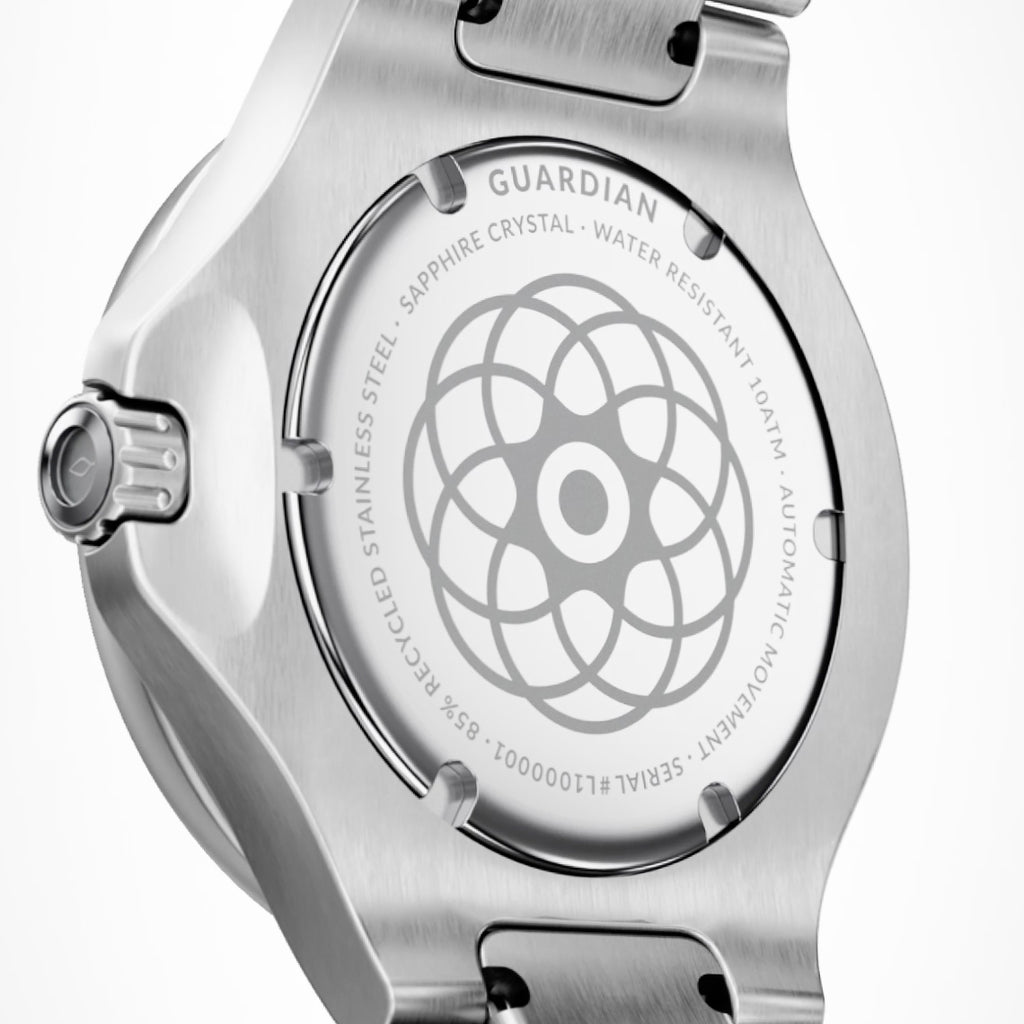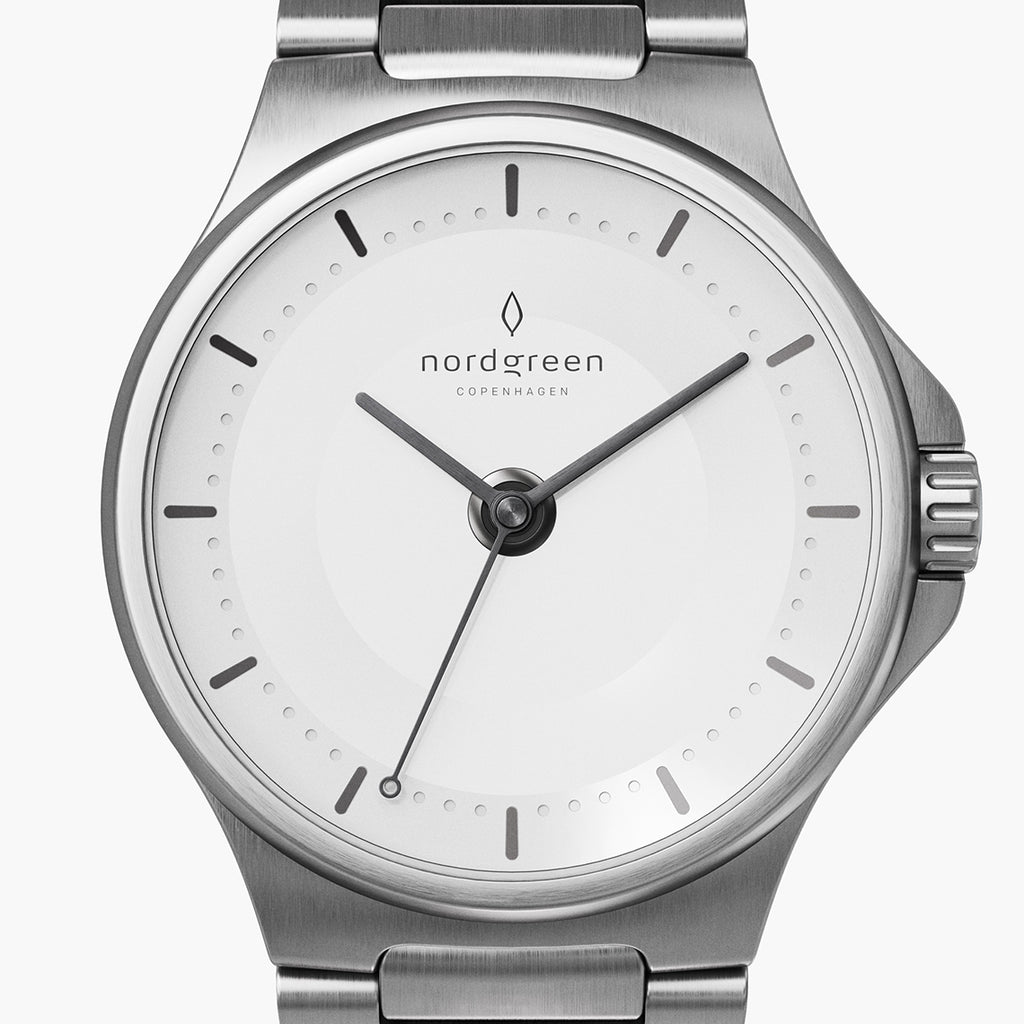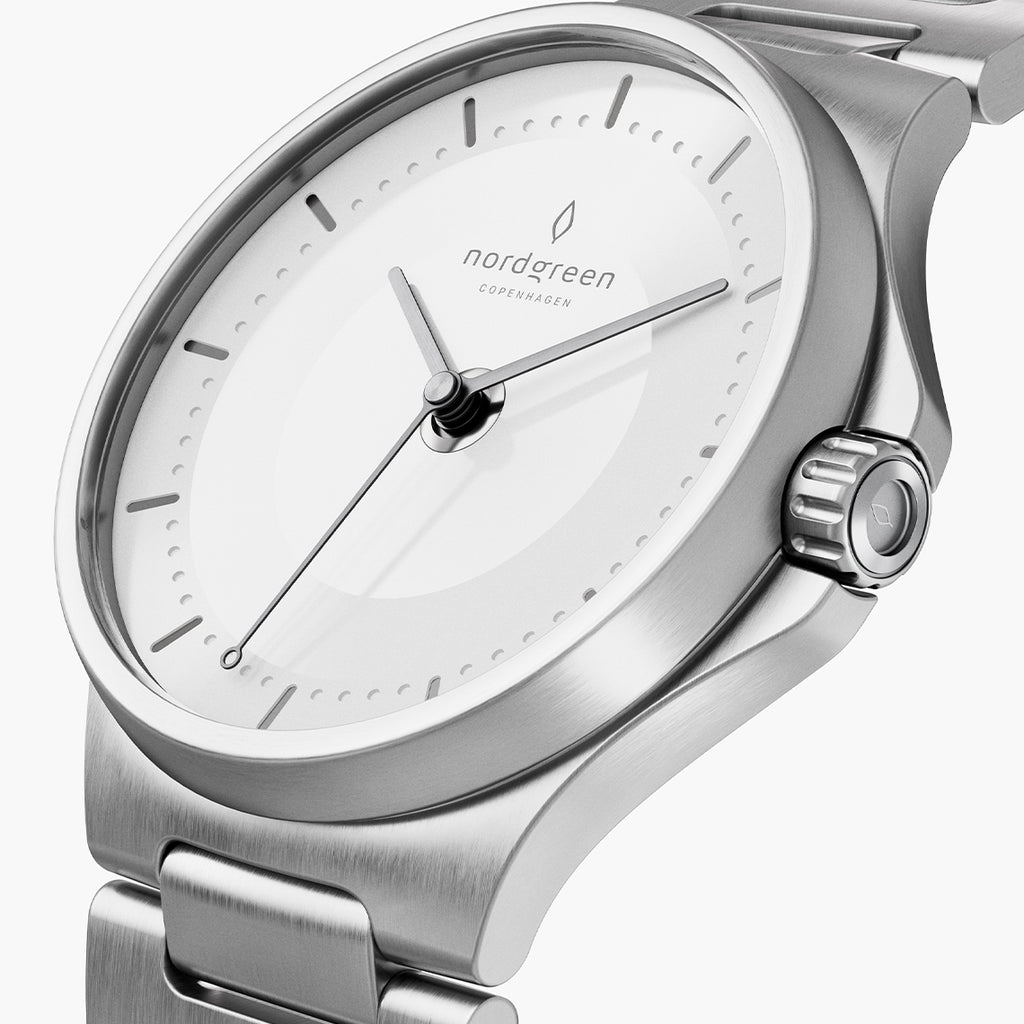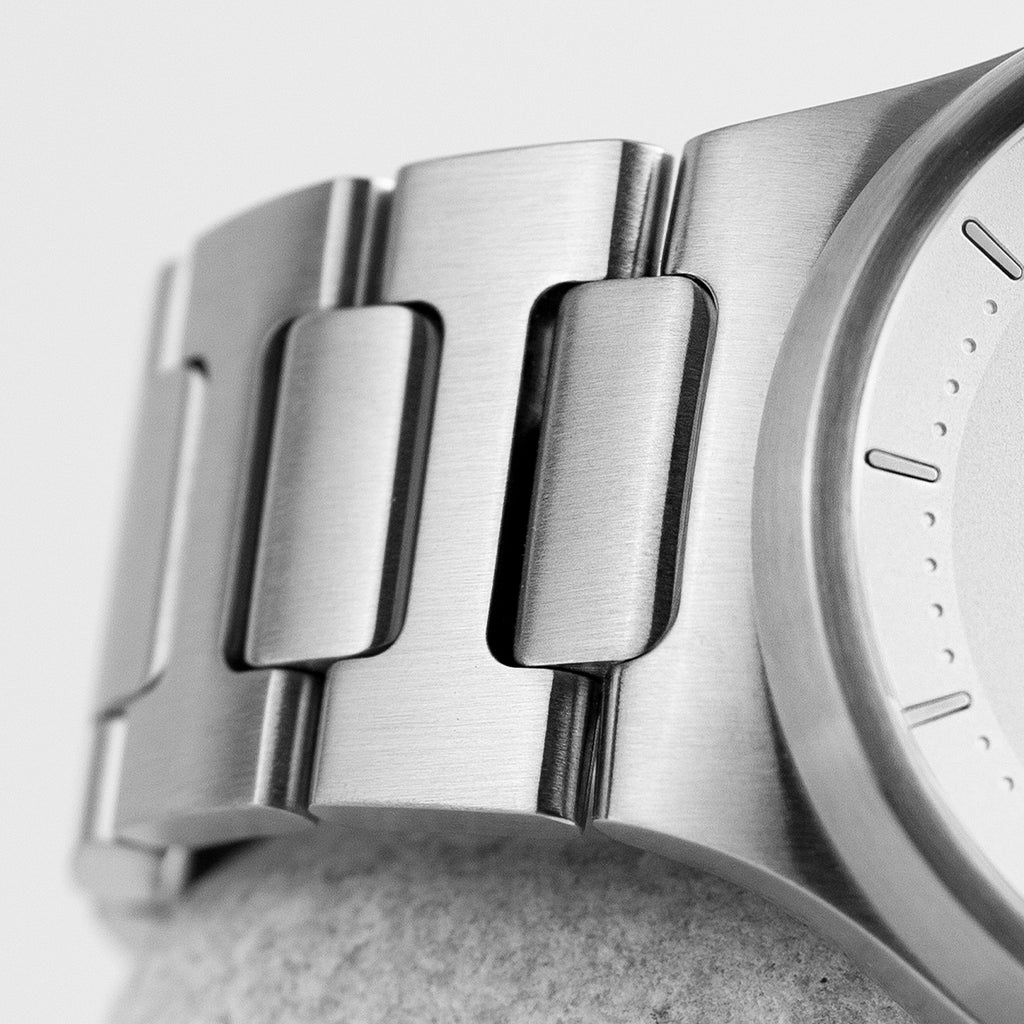
The creation process of Guardian
Together with circularity and sustainability experts, a lifecycle research and development project was conducted. The study started by a ‘cradle-to-gate’ environmental screening of a watch to detect the stages of the lifecycle and components of the product that exert the most environmental damage.
Guardian is designed to the essential, where every individual element has a distinct role to play. Thus, materials and design alternatives were studied specifically for each component in order to determine the most sustainable material and design choices.
Together with circularity and sustainability experts, a lifecycle research and development project was conducted. The study started by a ‘cradle-to-gate’ environmental screening of a watch to detect the stages of the lifecycle and components of the product that exert the most environmental damage.
Guardian is designed to the essential, where every individual element has a distinct role to play. Thus, materials and design alternatives were studied specifically for each component in order to determine the most sustainable material and design choices.

CHOICE OF MATERIALS
The results of the environmental screening showed that the material extraction stage has a more significant impact both in terms of energy consumption and CO2 footprint than the manufacturing phase. The parts of the product with a bigger contribution, and therefore the ones studied, are: the case body and case back, the dial, the strap and the glass.
A study of alternative materials for each of these critical components of Guardian was conducted in order to select the most sustainable option. The alternatives were assessed according to a number of evaluation criteria aimed to measure the life expectancy and environmental impact.
Choice of design components
In addition to the selection of materials, design decisions for each component are essential for the achievement of a watch that meets the specifications and lives up to Nordgreen’s vision and mission.
Movement
An automatic movement, particularly the Miyota Caliber 9039 movement, was chosen as the final solution, as it does not use batteries as a power supply. It offers a higher user satisfaction, as the customer does not have to worry about winding the watch, and less maintenance, as the sealing is more reliable. With proper maintenance the life expectancy of the mechanism can last 100 years. Particularly, the Miyota Caliber 9039 is a new movement, introduced to the market in 2018, requiring less oiling and, thus, less frequent maintenance than other movements.
Glass
The chosen geometry for the glass is flat crystal. As the occurrence of scratches and breaks minimizes the lifetime of the product is extended. Flat crystal is the
best solution to achieve a watch that can live 100 years.
Besides the benefits of the geometry per se, a good care of the watch by the consumer would extend the life of the component more than 10-20 years.
Crown
The final decision is a T-bar crown due to its compatibility with the design decision for the movement, an automatic watch, and the assurance of a long lifetime, through a mechanical link instead of an adhesive one. To increase the life expectancy the two protection factors have been considered, choosing a low placement for the crown on the case and to include crown guards.
Strap
The H-link bracelet is the final decision for its high life expectancy. A correct use and maintenance of the strap together with its optimal characteristics will extend the durability of the component.
Case
A round case, without nooks, to ease maintenance and refurbishment. A case in the higher end of thickness for better sturdiness and toughness. Together with a responsible use of the product by the user, the case can meet the goal of lasting 100 years.
Case back
The decided case back is a screw case, avoiding screws which ensures a good seal and an extended lifetime. A responsible use from the customer's side will also increase its life expectancy. Lastly, it meets the requirement of 10 ATM water resistance.





